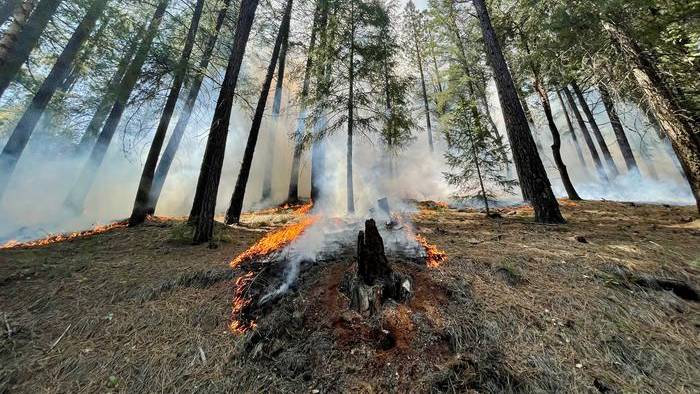New research from the University of California, Davis offers a fresh perspective on forest fires, suggesting that not all blazes are catastrophic. In fact, low- and moderate-severity wildfires may play a crucial role in mitigating the intensity of future conflagrations, potentially for up to two decades in certain climates.
The Surprising Benefits of ‘Reburns’
The study, published in the journal Ecological Applications, examined over 700 reburn fires – areas that have experienced multiple fires – across the western United States over the past 50 years. Using satellite remote sensing and advanced modeling techniques, the researchers uncovered a nuanced picture of how initial fires can influence subsequent blazes.
Lead author Claire Tortorelli, an ecologist for the U.S. Forest Service who conducted the research as a postdoctoral scholar at UC Davis, emphasizes the significance of these findings: “We’re living in a time with increasing wildfire, which poses challenges for our communities and landscapes. Some previous fires can have moderating effects on future fire behavior. It’s important to understand how past wildfires are going to affect what happens in the future.”
This research fills a critical knowledge gap. While much attention has been focused on high-severity fires, less was known about the long-term effects of less intensive blazes that leave most of the tree canopy intact. The team’s findings suggest that these lower-intensity fires could play a vital role in forest management strategies.
Climate, Geography, and the Lasting Effects of Fire
The study revealed that the duration and strength of a fire’s moderating effect on future blazes vary significantly depending on factors such as climate, forest type, and geographic location. Notably, forests along the California coast and in the Southwest demonstrated longer-lasting effects compared to those in the Sierra Nevada and Cascade ranges.
“It’s all about the vegetation and fuels that are coming back after fire,” Tortorelli explains. “We still need a more nuanced understanding of local fuels for managers to know how their specific system is going to burn in a future fire or how soon to come back and re-treat.”
While the reduced severity of reburns could last up to 20 years in some ecosystems, the effect diminishes over time. The researchers suggest that follow-up treatments, such as prescribed burns or mechanical thinning, could help prolong the initial fire’s fuel reduction benefits.
Andrew Latimer, a co-author and professor in the Department of Plant Sciences at UC Davis, points out the widespread potential of this effect: “If you add up how much area that is, that’s way more than we’ve so far been able to treat through mechanical thinning and prescribed burning, and so it’s the biggest form of fuel reduction that’s happening. It opens this window of opportunity to keep forests in good shape.”
Why it matters: This research has significant implications for forest management practices and wildfire mitigation strategies. By understanding how low- and moderate-severity fires can naturally reduce fuel loads and decrease the intensity of future fires, land managers can make more informed decisions about where and how to focus their risk reduction efforts.
For the general public, this study offers a more nuanced view of wildfires. While high-severity fires often dominate headlines, this research highlights the potential ecological benefits of less intense blazes. It suggests that not all fires are destructive and that some may play a crucial role in maintaining forest health and resilience.
The findings could also influence public policy and resource allocation for wildfire management. By leveraging the natural fuel reduction provided by lower-severity fires, agencies might be able to more efficiently target their prevention and mitigation efforts, potentially reducing the overall cost and environmental impact of forest management practices.
As climate change continues to alter fire regimes across the western United States, this research provides valuable insights that could help communities and ecosystems adapt to changing conditions. By working with natural processes rather than against them, forest managers may be able to create more resilient landscapes that are better equipped to withstand the challenges of a warming world.


